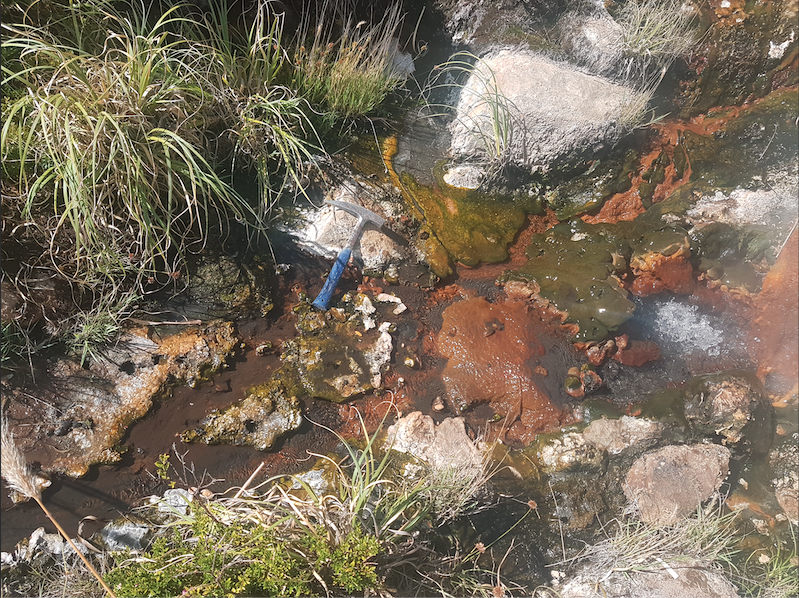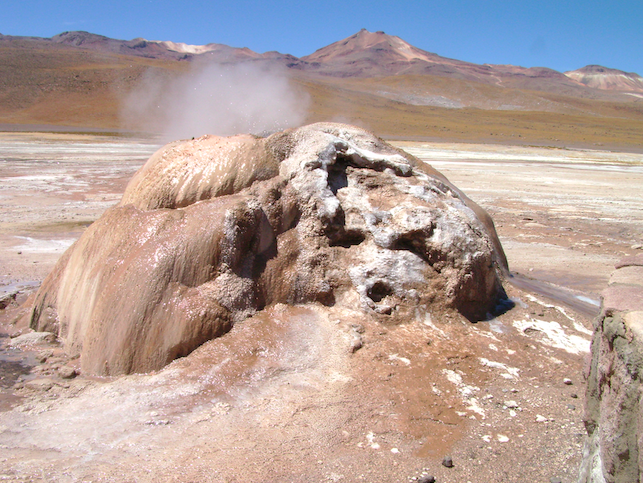Geochemistry of active and fossil sinter deposits
Understanding biogeochemical signatures during silica precipitation
Hydrothermal systems on Earth are inhabited by diverse microbial communities and we aim to identify potential biogeochemical signatures in sinters by studying their trace element and Si-isotopic composition.

Silica-rich biofilms at one perpetual spouter pool in the Alpehue river geothermal field at Sollipulli volcano.
Environmental controls on silica precipitation in geothermal fields
Understanding the effects of varying environmental conditions in active hydrothermal springs can allow us to understand the evolution of ancient and extinct hydrothermal systems. Also, fossil sinter deposits not only record textures, but are also archives to the geochemistry of precipitating fluids. Using observations from precipitation experiments in active systems we aim to better reconstruct past environmental conditions that might have influenced precipitation rates and the geochemistry in ancient hydrothermal fields.

Sinter mount formed in a geyser at El Tatio geothermal field in the Atacama Desert at 4000 m.a.s.l. The extremely arid conditions, high elevation and fast wind velocities can account for the fast silica precipitation rates at El Tatio. These fast rates result in massive sinter mounts as the iconic one here.
Here is a picture of my family before I was born at one of the geysers in El Tatio.

